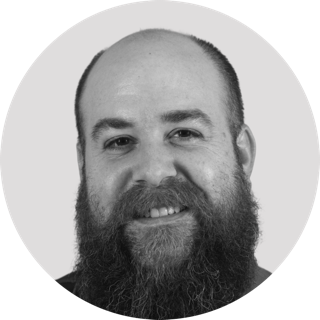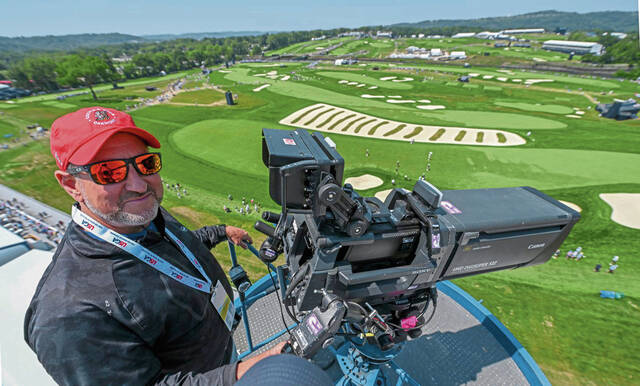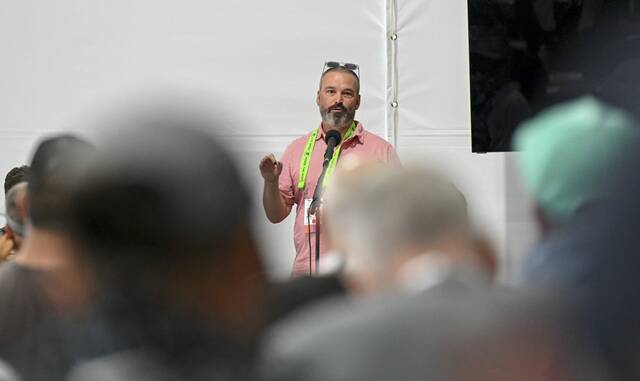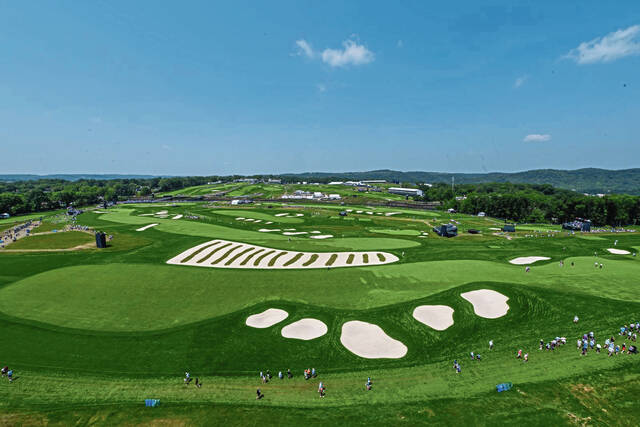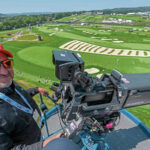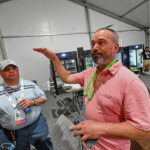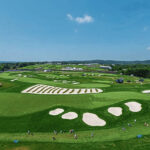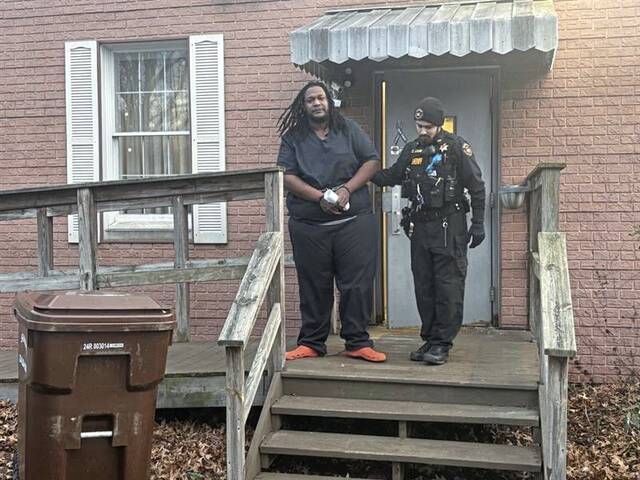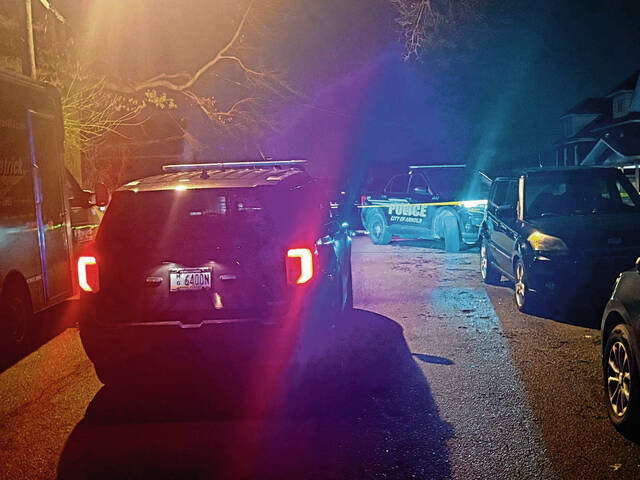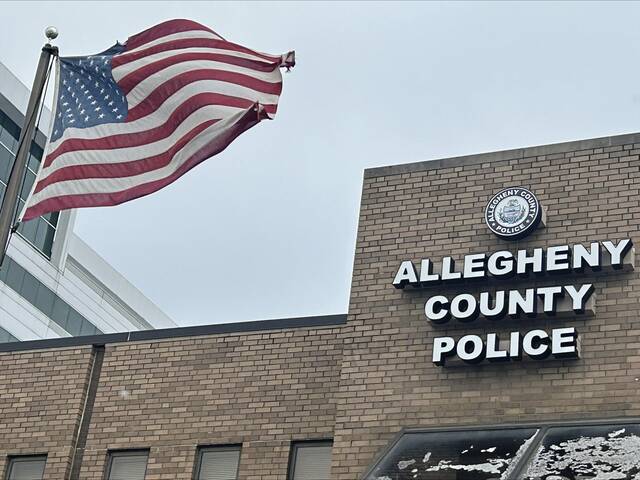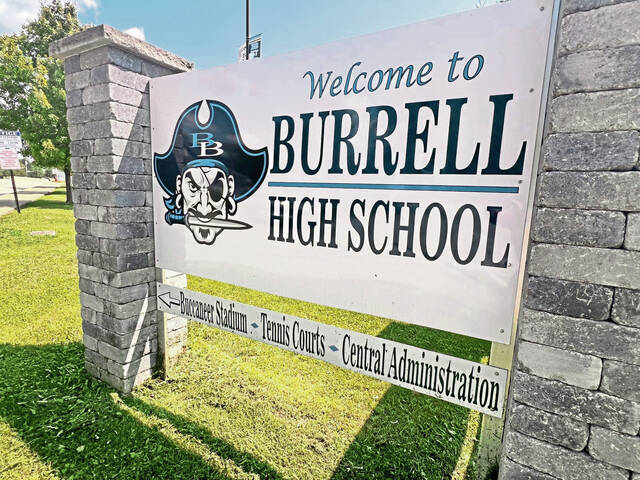When a golfer at the U.S. Open tees off, in less than one second the members of the NBC Sports broadcasting team know where the ball is headed, how far it will go and where it will land.
That’s great for viewers watching at home, who see a comet-like streak highlighting the ball’s flight.
But it’s even more useful for Joe Martin, lead golf director for NBC Sports, because it helps him determine which camera feed he’ll cut to next.
“We can set up our camera shots differently if I see a trace that’s starting to veer to the right,” said Martin, a West Virginia University alumnus who was joined by more than a half-dozen other Mountaineer journalism-school grads on NBC’s broadcast team. “If I see a shot going hard left, I know I have to switch to a different camera because there might be a bunker over there, and the camera placed up high will be able to see into that bunker.”
NBC began using ball-tracking technology about 15 years ago, and at this year’s U.S. Open at Oakmont Country Club the job is spread across multiple companies.
“A company called ShotLink is doing all the scoring data,” said Joe Caputo, NBC technical director at the U.S. Open. “And for the first time at this Open, we’re working with a company ShotLink hired called Trackman.”
At tee boxes, ShotLink staff set up cameras working with Trackman and optical tracking company Bolt6. The cameras can use a combination of radar, optical sensors and high-speed mechanics.
Trackman is known for its golf simulators, which gather similar data when users hit a ball into the simulator screen, to determine how far it would go and where it would land on a real course.
All of those systems work in concert to provide as much data as possible.
“Within 25 to 27 frames — each second of video is 30 frames — we can gather enough data in under a second to know where the ball is going to land,” Caputo said. “And we try to broadcast the show so that viewers at home don’t know that ‘TV magic’ is happening.”
Martin said the broadcast is delayed just enough to process all the necessary information and relay it in a meaningful way to the television audience. The various sensors essentially do some lightning-quick physics calculations and feed that data to systems from all of the companies involved, and then ARL Sports Graphics uses that information to create the tracking arc that shows on TV.
In addition, the broadcast team has drones sitting about 200 feet in the sky, with a bird’s-eye view of the course and the ability to track shots from above.
NBC’s broadcast team has 86 cameras set up across Oakmont Country Club.
Cameraman Darren Wargo has covered the U.S. Open every time it has been at Oakmont since 2007, and he has watched the course and the technology change over the years.
“The main thing is that nearly all the trees are gone now,” Wargo said.
That will make Wargo’s job a little easier. He is stationed in one of two massive cranes 125 feet in the air. From that vantage, Wargo can see more than a dozen holes.
“I’m going to be very busy,” he said with a laugh.
https://t.co/mnnWM0Ryz7 cameraman Darren Wargo shows his view from 1 of 2 NBC camera cranes. #USOpen pic.twitter.com/ldhZNeWQV4
— Patrick Varine - Tribune-Review (@VarineTrib) June 11, 2025
Between Wargo and the other crane camera operator, every hole but No. 1 can be seen from an elevated position.
What’s the hardest part of making sure all this technology works together in concert?
“Connectivity,” Martin said. “We run miles and miles of cable all over the golf course, so right now we’re calibrating all the equipment and the tracers. There’s a lot that goes into it, and good communication is one of the most important things.”
Martin and Caputo said part of the inspiration for ball-tracking technology came from observing the way golfing video games are set up.
“We’re kind of catching up to video games in terms of offering a similar kind of viewing experience, and we’re constantly trying to improve it,” Martin said.
Fans attending the U.S. Open also have access to some of the same technology.
ShotCast, which is available as part of the U.S. Open app, will allow fans to follow every shot. The digital experience, which leverages the PGA Tour’s ShotLink technology, will be available on the app and on the event website.
It will include dynamic shot trails from players and entire groups, radar data, 3D hole imagery, greens views and video highlights so fans can follow everything live or catch up after the round.
On the flipside, Martin and Caputo said they don’t want to overload viewers with data.
“We want to use the technology in the right place at the right times,” Martin said. “The most important thing is where the ball ends up, but there’s also the emotion of the golfer, the reaction of the crowd. All of that has to be incorporated into the broadcast.”

